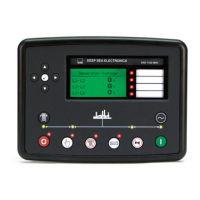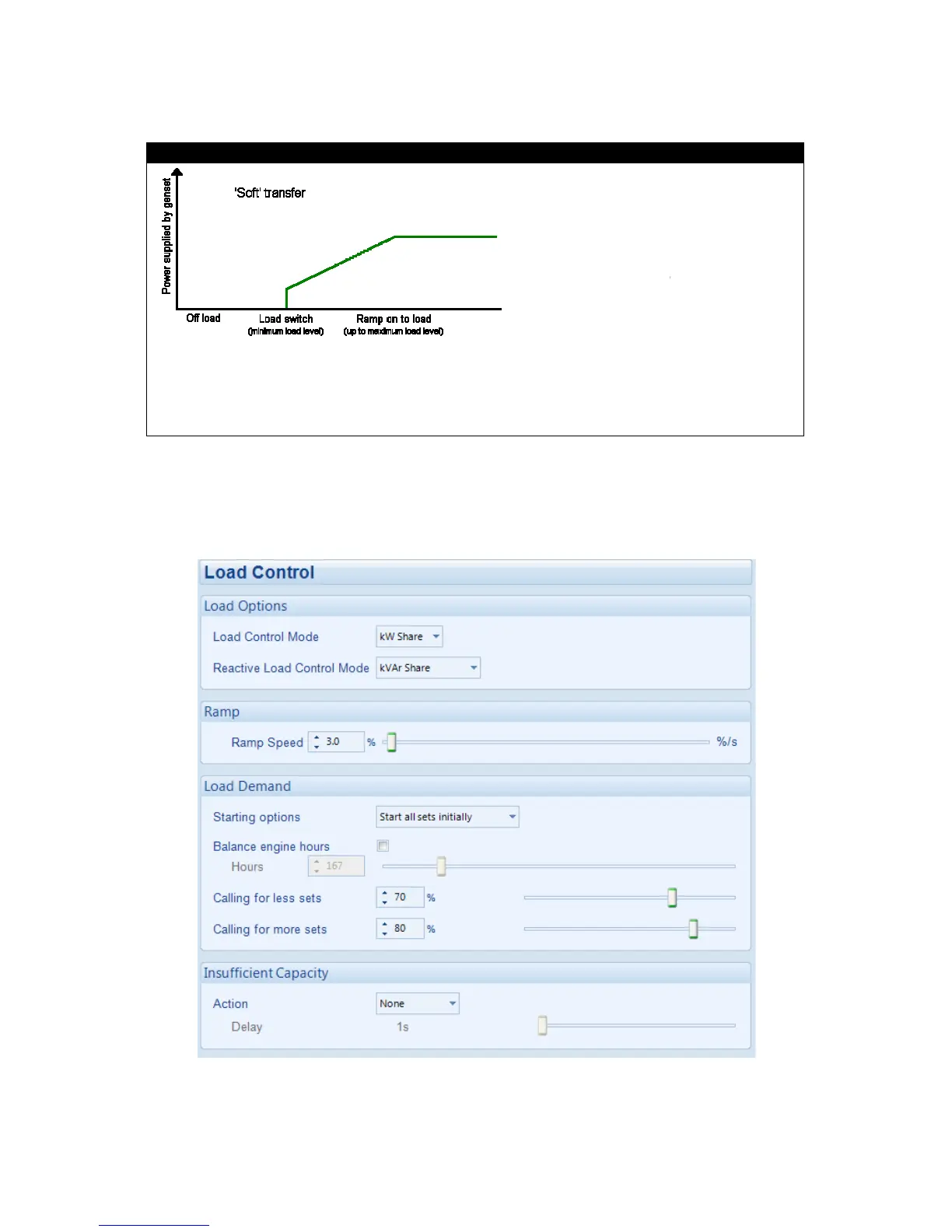‘Soft transfers’ of this type have many benefits, the most obvious of which are:
When the generator is removed from the bus, other sets in the system are not suddenly loaded with the
load share that was being
supplied by the generator being removed. Instead, the load is slowly ramped,
allowing time for the remaining sets to take up their share of the load.
Opening of the load switch occurs at a much lower load level, helping to reduce arcing of the contacts.
Parameters detailed overleaf...
When either of the load sharing modes are
selected (see below), the controller will
perform a ‘soft’ load transfer when taking up
Upon activation of the load
the load sharing system controls the
generating set to take up the minimum load.
When a paralleled set is to shed its load, first
the load is ramped down to the minimum load
level, and then the load switch is deactivated,
removing the generator from the bus.
‘Soft transfers’ of this type have many benefits, the most obvious of which are:
When the generator is removed from the bus, other sets in the system are not suddenly loaded with the
supplied by the generator being removed. Instead, the load is slowly ramped,
allowing time for the remaining sets to take up their share of the load.
Opening of the load switch occurs at a much lower load level, helping to reduce arcing of the contacts.
When either of the load sharing modes are
selected (see below), the controller will
perform a ‘soft’ load transfer when taking up
Upon activation of the load
the load sharing system controls the
generating set to take up the minimum load.
When a paralleled set is to shed its load, first
the load is ramped down to the minimum load
level, and then the load switch is deactivated,
removing the generator from the bus.
When the generator is removed from the bus, other sets in the system are not suddenly loaded with the
supplied by the generator being removed. Instead, the load is slowly ramped,
Opening of the load switch occurs at a much lower load level, helping to reduce arcing of the contacts.

